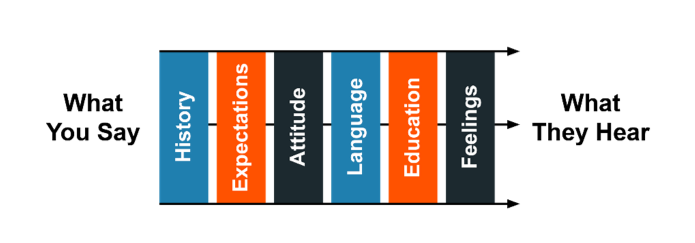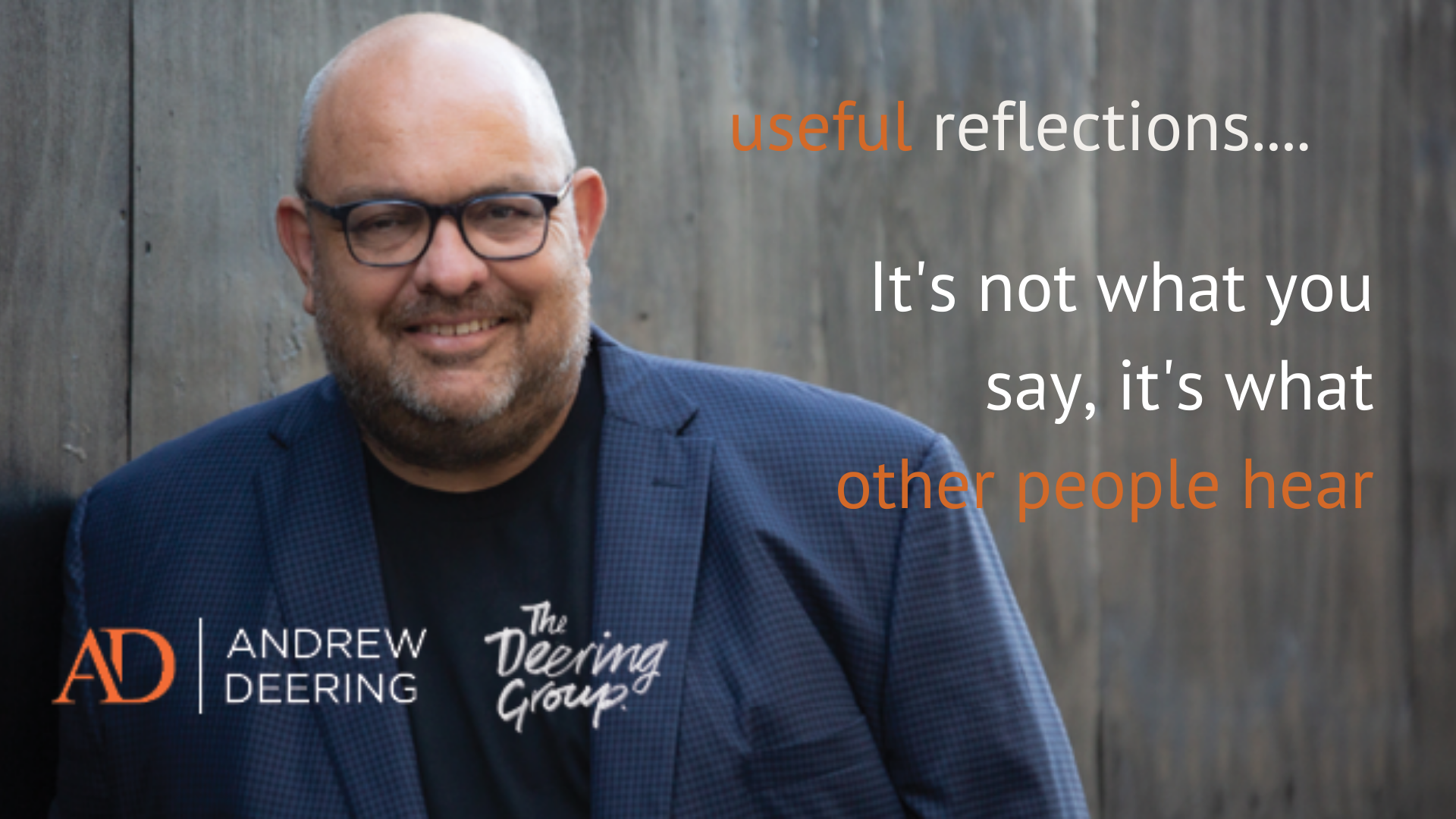I remember as a child playing the game, “Chinese Whispers”. We would sit in a circle on the classroom floor. The first person would whisper a simple phrase of two or three words to the person next to them. These words would be whispered from person to person until they reached the person who had initially shared them. Usually, the words had changed in all sorts of hilarious ways by the time they got around the full circle.
At the heart of Chinese Whispers is the fact that what you say isn’t necessarily what people hear. In the game, you can’t stop to check whether the person has understood what you said, you merely say the words.
I wonder how often we unconsciously play Chinese Whispers in our day-to-day lives – at work, at home and in all the interactions we have. Do we figuratively whisper in the ears of others, thinking our work is done, without checking what it is they actually heard?
As a young man, I was told the simple yet powerful words, “It’s not what you say, it’s what other people hear.” Powerful and wise words I seek to live by.
So, what do the words actually mean?
In every conversation we have, a complex process is at play. The information you deliver is consciously and unconsciously filtered by the person who is listening.
You could imagine we are all wearing a set of headphones unique to us. The headphones represent contextual barriers, such as the preconceptions, beliefs, prejudices, expectations and experiences we hold. These contextual barriers impact the context that will play in any conversation.

This conversational context is a critical factor in ensuring the content is received well, understood and able to be used. These “contextual headphones” can mean people are not hearing you or the content of your conversation.
The better you understand and recognise another’s context, the more plugged into their headphones you will be and the more they can hear you.
The key to successful communication is to take the imaginative leap of stuffing yourself into your listener's shoes to know what they are thinking and feeling in the deepest recesses of their mind and heart. How that person perceives what you say is even more real, at least in a practical sense, than how you perceive yourself.
Frank Luntz Tweet
As leaders, we must be mindful of conversational context and that barriers to people being able to hear us exist. The more we can become the “universal adaptor” for contextual headphones, the more effective we can be in our leadership, enabling others to hear the message we have shared.
A misalignment between what you say and what people hear can have profound consequences. A tragic example of this was towards the end of World War II when Japan was asked if it would surrender. Prime Minister Kantaro Suzuki’s response was “mokusatsu”, which meant to “withhold comment pending discussion”. However, the response was mistranslated and sent to Washington as, “We are treating your message with contempt.” The media jumped on this and spread it around the world. Allied forces took it to mean there would never be a diplomatic end to the war, and on August 6, 1945, the Americans dropped an atomic bomb on Hiroshima. Eighty thousand people were killed instantly. Tragic.
This is an extreme example of how a misunderstanding (what someone heard) can create horrifying consequences. As leaders, we must always be conscious of how our words might be translated, heard and understood (or misunderstood), and find ways to remove the contextual barriers in our conversations.
In the end, effective communication is about understanding – for both parties. Remember, it’s not what you say, its what people hear. As leaders, we must not only be aware of the content we deliver but the context into which it is delivered.
Here are some questions to ask yourself to ensure your conversations hit the mark:
How do you “show up” in different conversations and meetings?
Do you think through and prepare what you want to say?
Do you think through the context of the conversation as well as the content?
Do you make it as easy as possible for your listeners to hear and understand what you’re saying?
Do you enquire about the listener’s state?
Do you watch for the appearance of any contextual barriers in the other person?
How successfully do you plug into other people’s headphones?
Be kind, be true, be well, be you.


